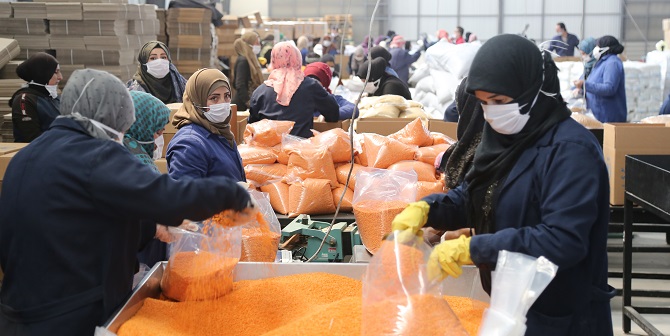
On 4 February 2020 we issued a policy brief, New Consumer Price Index estimates for Syria reveal further economic deterioration and alarming levels of humanitarian need, on the startling sharp rise of the Consumer Price Index (CPI) in Syria and we raised the alarm that this could bring a considerable part of the population to the edge of famine, not because of the collapse in availability of food, but because of the lack of access to it by most. Since then, the economic deterioration has accelerated which prompted us to make calculations for the current CPI, the wage gap and the government’s ability to cover this gap.
Our new calculation shows that the ‘all items’ CPI in Syria in May 20201 stands at 2700 points (taking the year 2010 as the base year). This means that the prices of ‘all items’ such as general goods and services increased almost 27 times its level in 2010 compared to 17 times in January 2020. It is important to note that since January 2019, the accumulated increase in all items CPI in Syria has reached 230%. This means that in May 2020 the prices of all items surged by 3.3 times compared to its level in December 2018.
According to our calculations, between January and May 2020, the CPI of all items in Syria has surged by 61%. During this period, and in addition to all other factors discussed in our previous policy brief, the CPI has been partly affected by some the measures taken by the Syrian government (and neighboring countries) to contain COVID-19.
By the end of May, the CPI is expected to reach a monthly increase of almost 30% compared to the previous month. This is widely thought to be linked to the recent rift with Rami Makhlouf, a key crony capitalist in Syria and the cousin of the president which resulted in the confiscation of all his assets.
The estimations show that food and beverage prices in Syria rose by a factor of 32.5 times since 2010. Almost half of that increase took place during the first five months of 2020, particularly in May. The increase in the food and beverage CPI is higher than the ‘all item’ CPI owing to several factors, such as the impeded ability of the government to import and store food, and the monopoly of some traders of the market of certain food items.
Proxy indicators also show dramatic changes in the consumption behaviour of Syrian households. For instance, the consumption of meat in Syria has witnessed a sharp decline, almost 95% between 2010 and 2020.
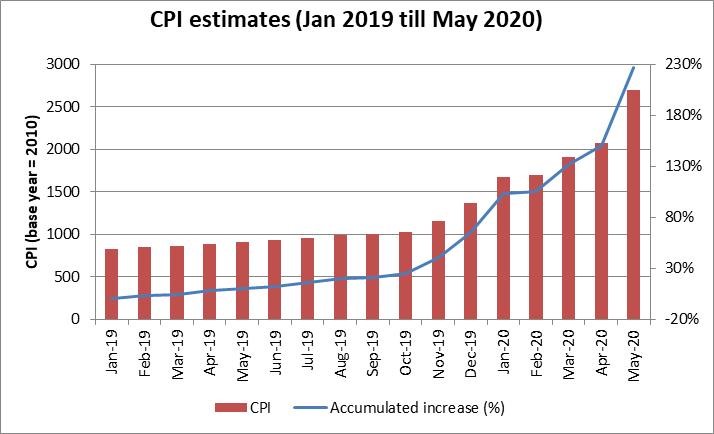
Looking into the monthly average wage in Syria, we find that it has increased from 11500 SYP in 2010 to around 60000 in 20202. Yet, and based on the above CPI estimates, the monthly average salary should be 310000 SYP to reach the purchasing power of its level in 2010. This means that the current wages should be raised 420% to compensate the surge in CPI. For public employment, this means that the government should pay an extra 500 billion SYP each month. Considering that the total public budget in 2020 is 4000 billion SYP, paying an extra 6 trillion SYP is way beyond the government capability.
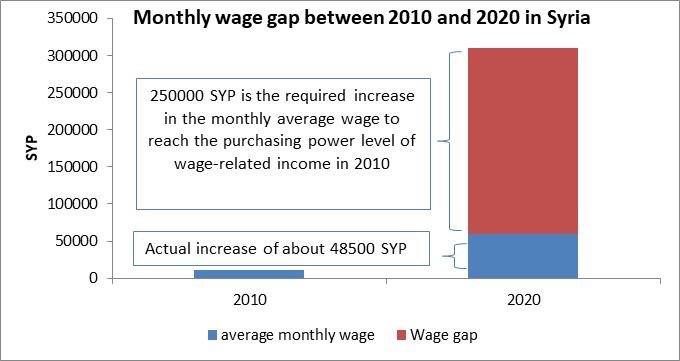
Given that more than 90% of the population in Syria have been under the poverty line since the end of 20173, and that the ‘all items’ CPI increased 425% since then, we estimate that a higher percentage of the population is now under the poverty line, and also that the intensity of poverty across Syria has deepened sharply.
Policy Implications
In our previous related a policy brief on CPI increase in Syria, we discussed policy implications of this sharp increase. We copy these policy implications here as we think they are still valid to address the current situation:
Our analysis reveals how highly exposed the Syrian economy is to external factors and the impact of this on the humanitarian conditions of the Syrian people. Increasing the budget of humanitarian response without addressing the economic deterioration could not be sustainable. National and international response policies need to factor this in on two levels.
- First is an immediate and short-term strategy. There is a need to design and implement a new humanitarian response plan which local and international actors should be involved in. Syria’s destroyed resources will not be sufficient to cover all humanitarian needs; thus the international community should play a crucial role in supporting such plan.
A straightforward vast supply of basic foods to the market could be part of this plan. Although the problem is more demand-driven than a supply problem, a large food aid programme could break the food price inflation spiral and make food affordable. Such a programme should prioritise buying from small farmers and agro-food manufacturers in Syria in order to create job opportunities and generate income especially for those farmers who have been enduring enormous challenges, including poor markets and the recent wildfires. It is equally essential that humanitarian responses should avoid feeding the endemic corruption and selective targeting. This requires higher access and implementation under a very strong monitoring and evaluation system. The process could be more efficient by adopting a participatory approach in which local communities contribute in planning, implementation, and monitoring phases. But recovering the impact of CPI surge cannot be achieved through a humanitarian response alone.
- On the second level, there is a need for a new strategy that includes a comprehensive economic rescue package funded mainly by the international community, and it needs to be an integral part of the political solution. The package should aim to overcome the impact of the conflict and build the foundations for an inclusive and productive economy governed by fair institutions, and should be guided by Syrians’ needs and aspirations. Having such a strategy would sustain the positive impact of the humanitarian response plan. Considering the complexity of the Syrian conflict, such a strategy should be implemented incrementally and include Syrians from all backgrounds. To ensure the sustainability and efficiency of this strategy and to make it part of viable peace, it should be led by actors guided by Syrian public interests.
1 Syrian Center for Policy Research (2019): “Food Security and Conflict in Syria” https://www.scpr-syria.org/launch-of-food-security-conflict-in-syriareport/.
2 Labour force Survey 2010, Central Bureau of Statistics for the 2010 average.
3These calculations were made precisely up to 21 May 2020.
Note: The CRP blogs gives the views of the author, not the position of the Conflict Research Programme, the London School of Economics and Political Science, or the UK Government.

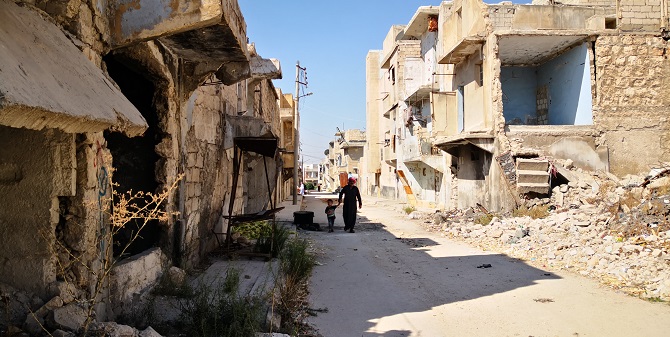
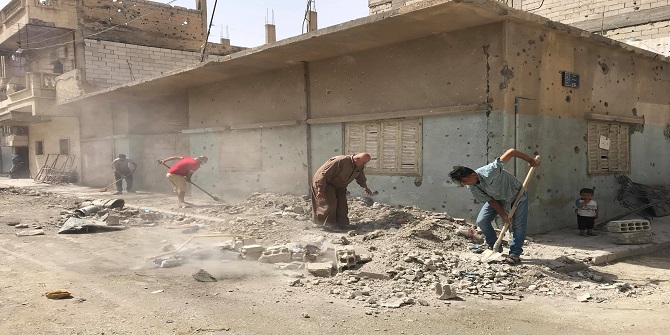

2 Comments